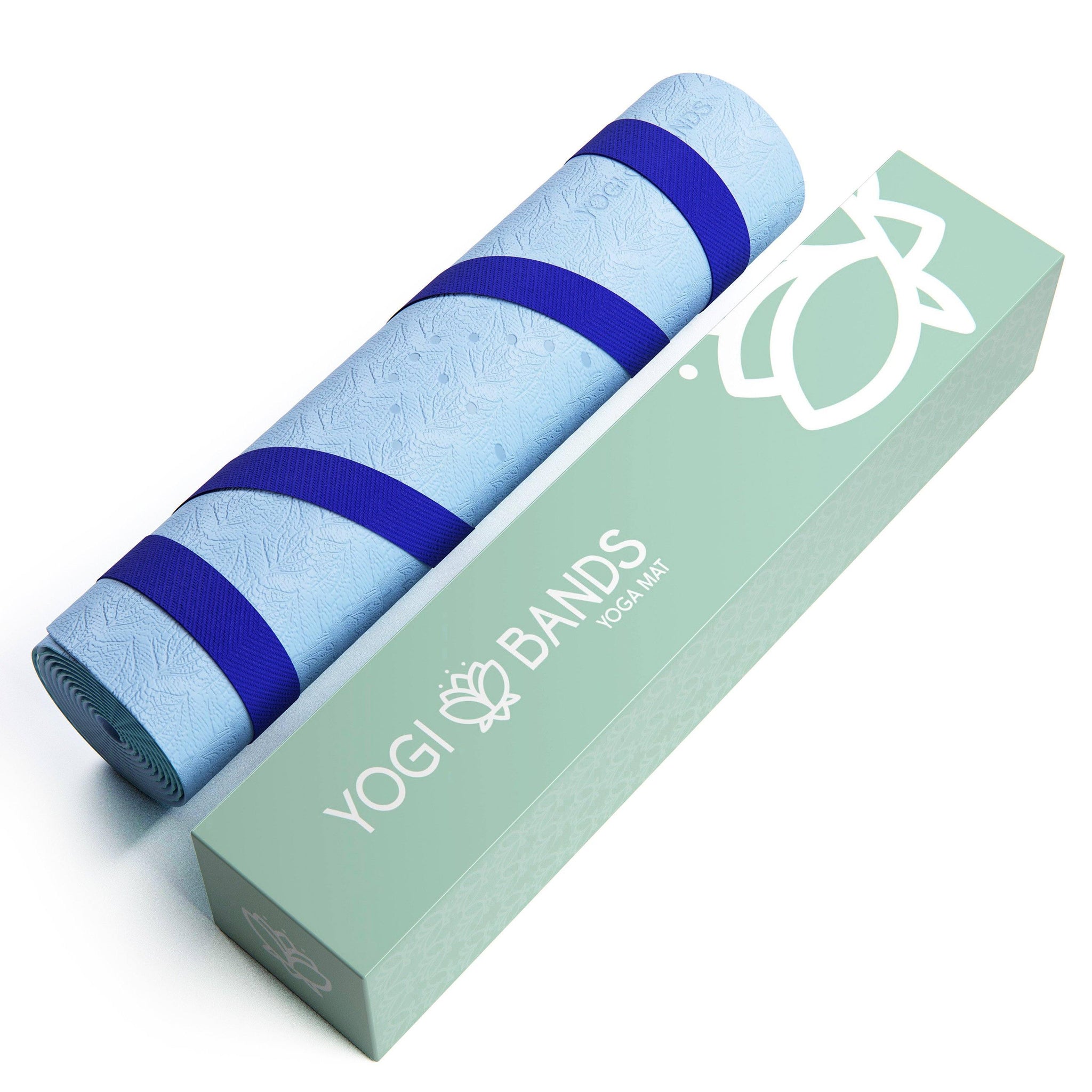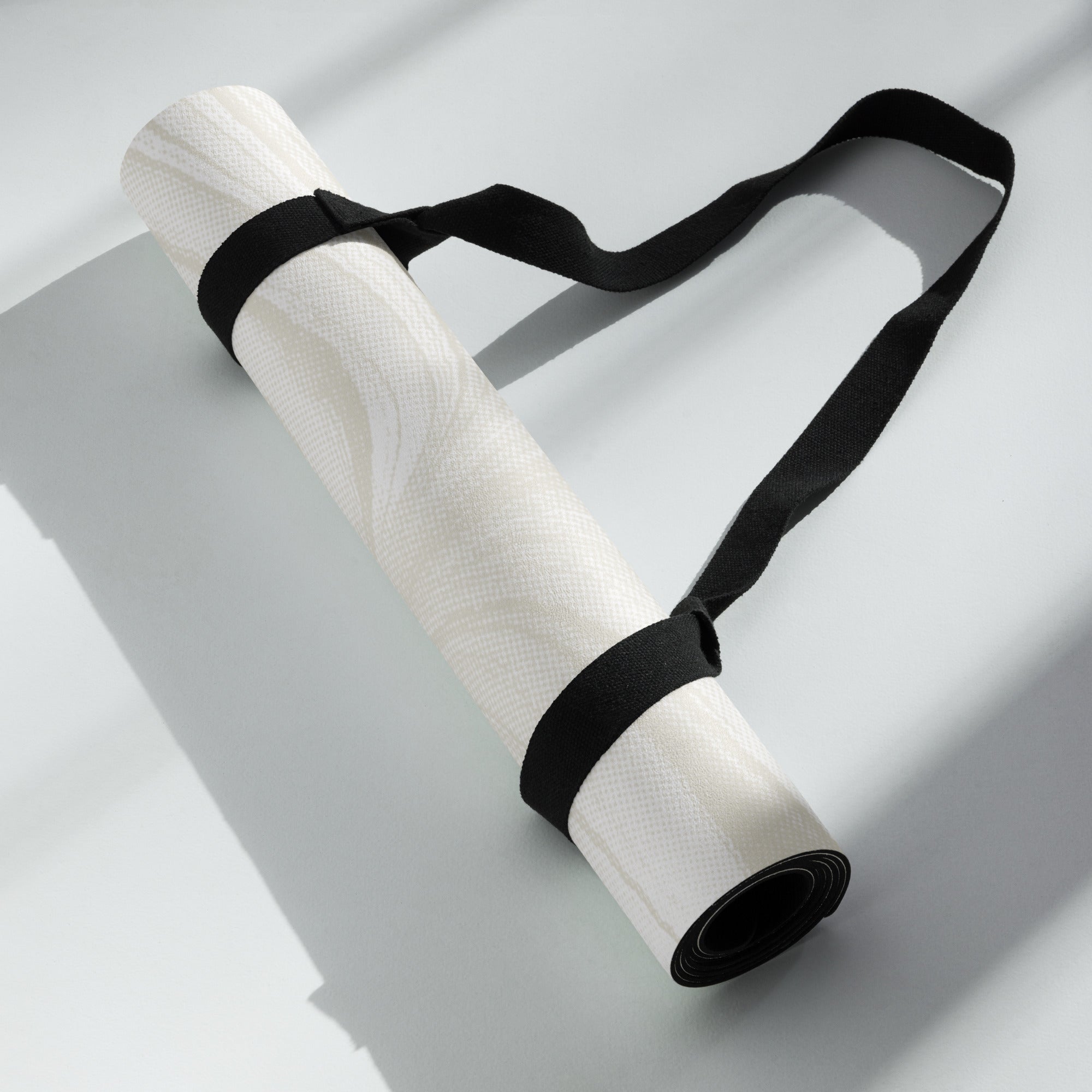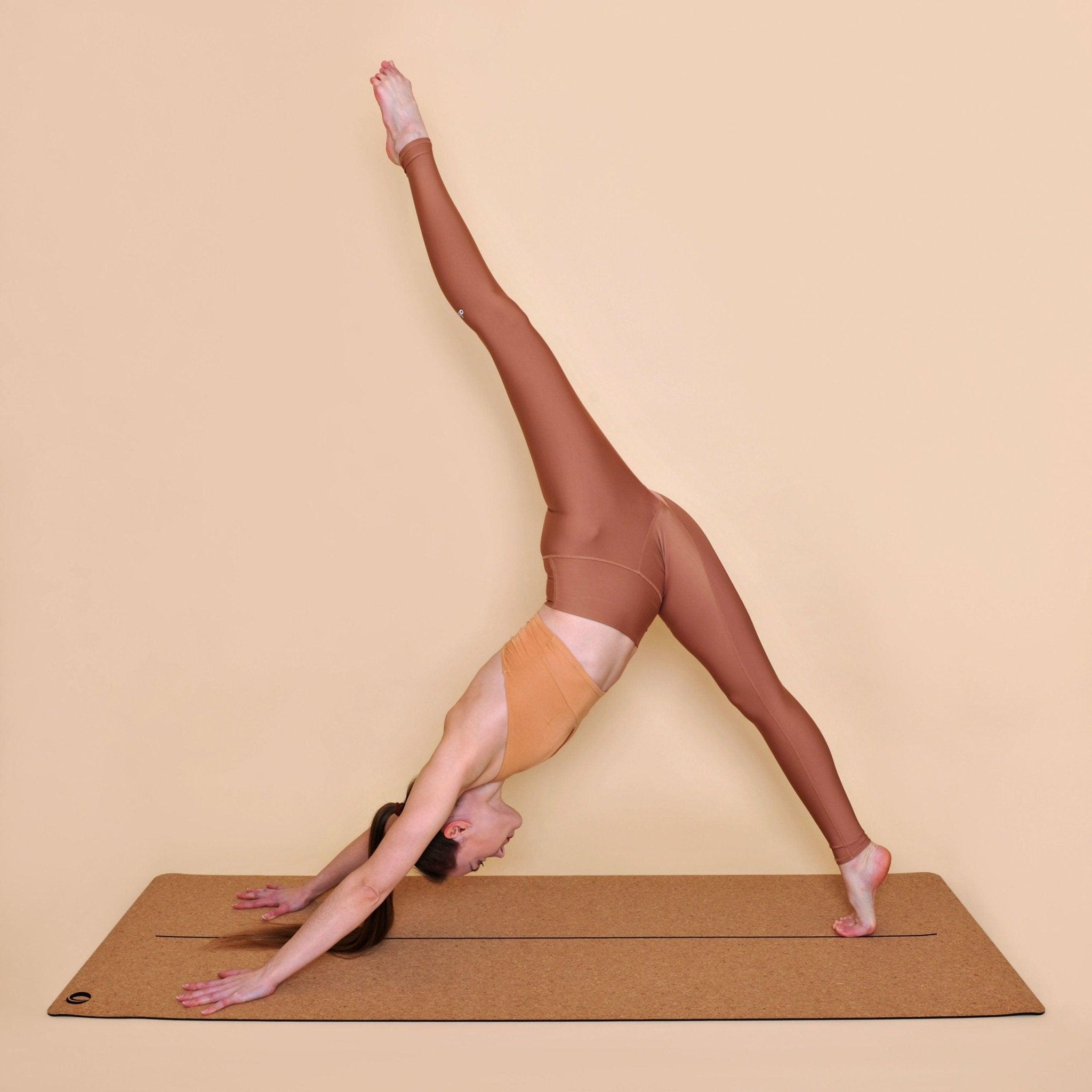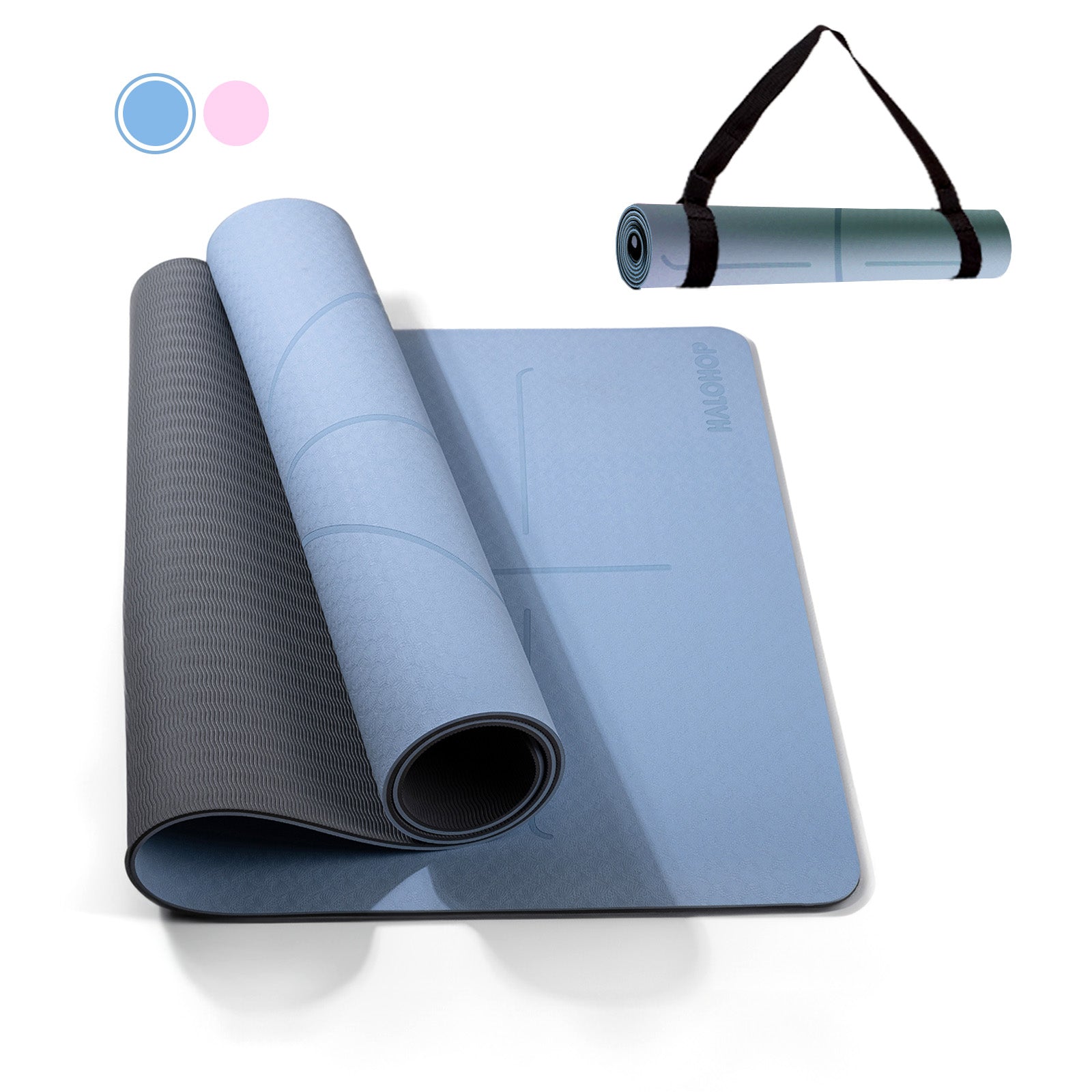How to store yoga mat? Yoga mats provide a comfortable and stable surface for your practice, but when not in use, they can quickly become a hassle to store. Whether you’re a regular at the yoga studio or prefer to practice at home, properly storing your yoga mat is essential for keeping it clean, safe, and in good condition. In this article, we’ll discuss some effective methods for storing your yoga mat to ensure longevity and convenience.

Cleaning your yoga mat
Before storing your yoga mat, it’s important to ensure that it’s clean and free of sweat, dirt, and bacteria. Over time, yoga mats can accumulate sweat, oils, and germs from your skin, the floor, and the environment. To clean your mat, start by wiping it down with a damp cloth or spray it with a non-abrasive yoga mat cleaner. For a more thorough clean, you can also soak your mat in a bathtub with a gentle detergent and water, then rinse it off and let it air dry. Make sure your mat is completely dry before storing it to prevent mold and mildew.
Roll instead of fold
One of the easiest and most common ways to store a yoga mat is to roll it up. Rolling your mat instead of folding it helps to maintain its shape and prevent creases. Start by laying your mat flat on the floor and smoothing out any wrinkles or kinks. Then, begin rolling the mat from one end to the other, keeping it tight and even as you go. Once it’s rolled up, secure it with a strap or tie to keep it from unraveling.
Use a yoga mat bag
Investing in a yoga mat bag can be a great way to store your mat while also making it easier to transport. These bags come in various styles and sizes, with some offering additional pockets for storing your personal belongings. Look for a bag that fits the dimensions of your mat and provides enough room for easy insertion and removal. Many yoga mat bags also come with adjustable straps or handles, making it convenient to carry your mat to and from the studio.
Wall-mounted storage
If you’re short on floor space or simply want to keep your yoga mat out of the way, consider wall-mounted storage options. There are a variety of hooks, racks, and straps available that can be easily installed on the wall to hold your rolled-up yoga mat. This method not only saves space but also adds a decorative touch to your home gym or yoga studio. Make sure to securely mount the storage unit to the wall and test its weight-bearing capacity before hanging your mat.
Vertical storage
For a space-saving solution, consider storing your yoga mat vertically. This can be done by using a simple strap or belt to secure the mat to a closet rod or hook on the wall. Vertical storage not only keeps your mat off the floor but also allows for easy access when you’re ready to practice. Just be sure to use a sturdy and wide enough strap to prevent any damage to the mat.

Store in an open area
After cleaning and rolling your yoga mat, it’s important to store it in a well-ventilated area. Avoid keeping your mat in a closed or damp space, as this can lead to mold, mildew, and unpleasant odors. Instead, find a clean and dry spot where your mat can air out and breathe between uses. If you have a designated yoga space in your home, consider placing a mat rack or shelf nearby for convenient storage.
Advantages of yoga mat
Yoga has gained immense popularity in recent years as a physical and mental exercise that promotes flexibility, strength, and relaxation. It is no wonder that millions of people worldwide have embraced yoga as a way to improve their overall health and well-being. One of the essential tools for practicing yoga is a yoga mat. This humble piece of equipment provides a multitude of benefits that significantly enhance the yoga experience.
Creating a Stable and Hygienic Surface
One of the primary benefits of using a yoga mat is that it creates a stable and hygienic surface for practicing yoga. Unlike the floor, which can be uneven and slippery, a yoga mat provides a consistent and non-slip surface for performing various yoga poses and movements. This stability is essential for preventing injuries and ensuring proper alignment during practice. Additionally, yoga mats are typically made of materials that are easy to clean and maintain, which helps to create a hygienic environment for yoga practice.
Cushioning and Support
Another advantage of using a yoga mat is the cushioning and support it provides. Many yoga poses require practitioners to be in contact with the floor, which can be uncomfortable, especially for those with sensitive joints or bony areas. A yoga mat acts as a cushion between the body and the floor, reducing discomfort and providing support during poses. This cushioning is particularly beneficial for seated and kneeling poses, as well as inversions and balance poses where the body’s weight is placed on the hands or wrists.
Improving Alignment and Balance
Yoga mats often feature alignment markings or guidelines that help practitioners improve their posture and balance. These markings serve as visual aids for positioning the body correctly during poses, which can be especially helpful for beginners who are still learning the basics of yoga. By using a yoga mat with alignment cues, practitioners can develop a greater awareness of their body’s alignment and make the necessary adjustments to achieve better balance and stability in their poses.

Creating a Personal Space
Practicing yoga on a mat provides practitioners with a designated and personal space for their practice. This sense of space is essential for maintaining focus and concentration during yoga sessions, as it allows practitioners to create a physical boundary between themselves and their surroundings. Additionally, having a dedicated yoga mat can help to establish a routine and a sense of ritual around the practice of yoga, making it easier to commit to regular sessions and create a consistent practice.
Portability and Convenience
Yoga mats are lightweight, portable, and easy to carry, making them convenient for practicing yoga at home, in a studio, or even while traveling. The ability to roll up a yoga mat and take it wherever you go allows practitioners to maintain their yoga practice regardless of their location. This portability is particularly beneficial for individuals who lead busy lifestyles and need a convenient and accessible way to practice yoga on the go.
Promoting Mindfulness and Meditation
In addition to its physical benefits, using a yoga mat can also contribute to the mental and emotional aspects of yoga practice. By creating a dedicated space for yoga, practitioners can cultivate a sense of mindfulness and meditation during their sessions. The act of unrolling a yoga mat and setting it up for practice can serve as a ritual that helps individuals transition into a focused and present mindset, ready to engage in the practice of yoga with intention and awareness.

Conclusion
Properly storing your yoga mat not only helps to preserve its quality and cleanliness but also makes it more convenient to use. By following these methods for cleaning and storing your yoga mat, you can ensure that it remains in good condition for years to come. Whether you prefer to roll, hang, or store your mat in a bag, finding the right storage solution can help to optimize your yoga practice and keep your mat ready for each session. With these tips in mind, you can enjoy a clutter-free and organized yoga space that’s conducive to relaxation and mindfulness.
